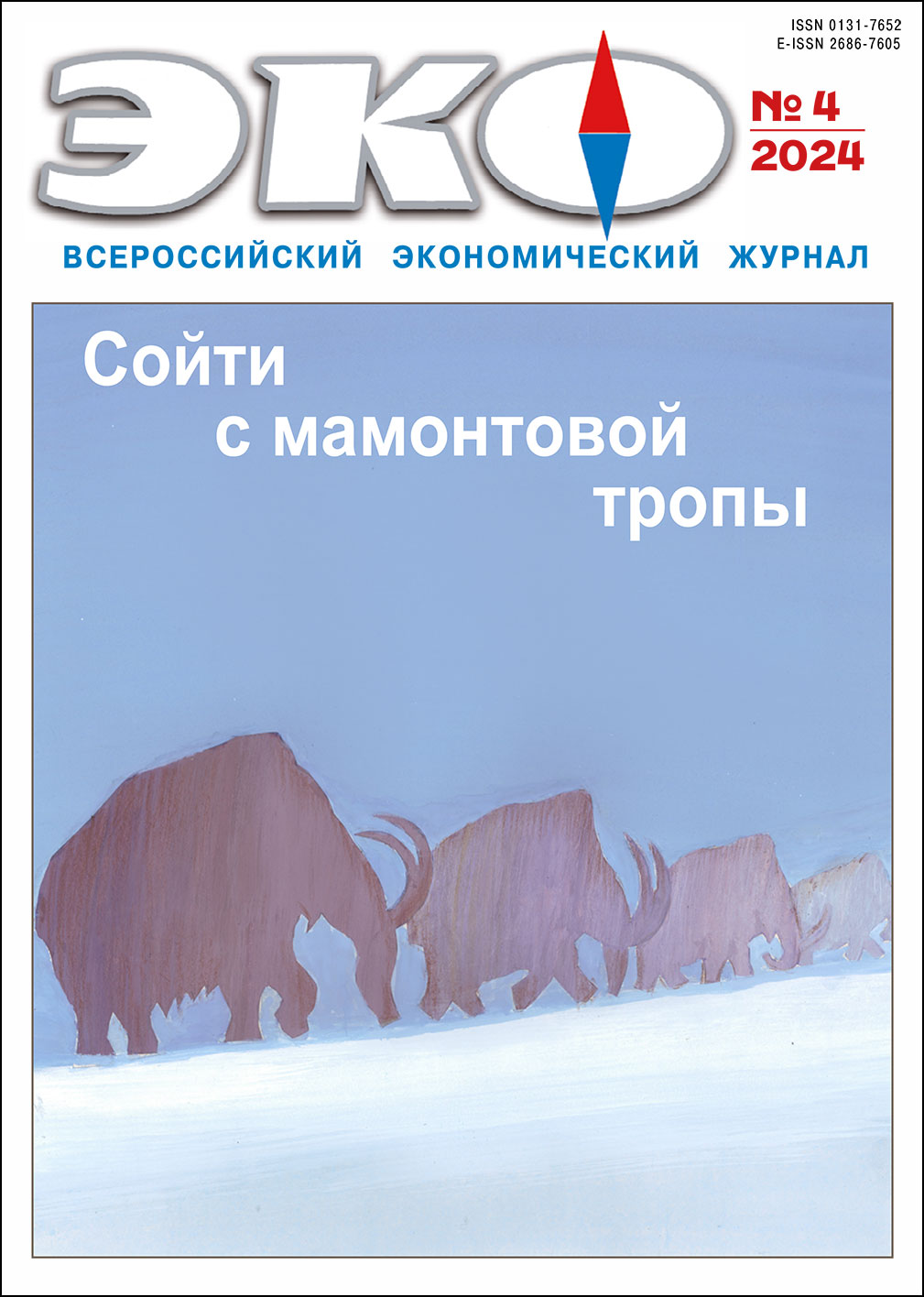INVESTMENT, INNOVATION & INDUSTRIAL POLICIES
Published 2024-08-12
Keywords
- strategic public policy priorities; support for SMEs; procurement from SMEs; decision-making by public procurers; incentives
How to Cite
1.
Shadrina Е, Kashin Д. What Drives Public Procurement from SMEs?. ECO [Internet]. 2024 Aug. 12 [cited 2026 Jan. 1];54(4):110-27. Available from: https://ecotrends.ru/index.php/eco/article/view/4762
Abstract
The paper analyzes the incentives and barriers to government procurement from SMEs. Based on the results of a large-scale online survey of 1,395 customers conducted in 2021, we found that the most powerful incentive to procure from small businesses is the fear of customers to violate the law by failing to meet the mandatory standard for such purchases. Factors related to the desire to support small businesses and the desire to fulfill strategic government objectives also contribute to placing a larger share of orders with SMEs. The results of the study show that in addition to the regulation of public procurement, there are other factors that help to achieve strategic objectives.References
- Авдашева С.Б., Яковлев А.А., Головщинский К.И. и др. Регламентированные закупки в России: как повысить стимулирующую роль расходов бюджетов и регулируемых компаний. М.: Издательский дом НИУ ВШЭ, 2020.
- Бальсевич А.А., Подколзина Е.А. Причины и последствия низкой конкуренции в государственных закупках в России // Экономический журнал Высшей школы экономики. 2014. Т. 18. № 4. С. 563–585.
- Быковская Ю.В., Иванова Л.Н., Сафохина Е.А. Малое и среднее предпринимательство в современной России: состояние, проблемы и направления развития // Вестник Евразийской науки. 2018. № 5.
- Кашин Д.В. Закупки у малого и среднего бизнеса: что влияет на решения заказчиков? // Вестник Санкт-Петербургского университета. Серия 8. Менеджмент. 2021. Т. 20. № 3. С. 410–431.
- Кашин Д.В., Шадрина Е.В. Эффективность механизма поддержки малого и среднего бизнеса в системе государственных закупок Российской Федерации // Вестник Санкт-Петербургского университета. Серия 8. Менеджмент. 2019. Т. 18. № 1. С. 94–114.
- Левченко К.А., Епанчинцев В.Ю. Государственная поддержка малого и среднего предпринимательства в Российской Федерации // Электронный научно-методический журнал Омского ГАУ. 2018. Т. 1 № 12.
- Шадрина Е.В., Виноградов Д.В., Кашин Д.В. Отражение экологических приоритетов государства в закупочной деятельности государственных организаций // Вопросы государственного и муниципального управления. 2021. № 2. С. 34–60.
- Яковлев А.А., Балаева О.Н., Родионова Ю.Д., Ткаченко А.В. Проблемы и эффективность госзакупок глазами их участников // ЭКО. 2020. № 11. С. 83–103. DOI: 10.30680/ЕСО0131-7652-2020-11-83-103
- Яковлев А.А., Ткаченко А.В., Балаева О.Н., Родионова Ю.Д. Российская система госзакупок: закон меняется, проблемы остаются // ЭКО. 2018. № 9. С. 17–38. DOI: 10.30680/ЕСО0131-7652-2018-9-17-38
- Armstrong, J.S., Overton, T.S. (1977). Estimating nonresponse bias in mail surveys. Journal of Marketing Research. No. 14. Pp. 396–402.
- Clemens, B. (2006), Economic incentives and small firms: Does it pay to be green? Journal of Business Research. No. 59. Pp. 492–500.
- Doroshenko, M., Miles, I., Vinogradov, D. (2014). Knowledge intensive business services: the Russian experience. Foresight and STI Governance. No. 8. Pp. 24–38.
- Fousteris, A.E., Didaskalou, E.A., Tsogas, M.-M.H., Georgakellos, D.A. (2018). The environmental strategy of businesses as an option under recession in Greece. Sustainability. No.10. 4399.
- Hair, J.F., Gabriel, M., Patel, V. (2014). AMOS covariance-based structural equation modeling (CB-SEM): guidelines on its application as a marketing research tool. Brazilian Journal of Marketing. No. 13. Pp. 44–55.
- Li, Y. (2014). Environmental innovation practices and performance: moderating effect of resource commitment. Journal of Cleaner Production. No. 66. Pp. 450–458.
- Liu, J., Xue, J., Yang, L. & Shi, B. (2019). Enhancing green public procurement practices in local governments: Chinese evidence based on a new research framework. Journal of Cleaner Production. No. 211. Pp. 842–854.
- Mironov, M., Zhuravskaya, E. (2016). Corruption in procurement and the political cycle in tunneling: Evidence from financial transactions data. American Economic Journal: Economic Policy. Vol. 8. No. 2. Pp. 287–321.
- Shadrina, E.V., Vinogradov, D., Kashin, D.V. (2022). Implicit incentives in green public procurement: Good intentions versus rigid regulations. Ecological Economics. Vol. 198. Article 107458.
- Skordoulis, M., Ntanos, S., Kyriakopoulos, G.L., Arabatzis, G., Galatsidas, S., & Chalikias M. (2020). Environmental innovation, open innovation dynamics and competitive advantage of medium and large-sized firms. Journal Open Innovation. No. 6. 195 p.
- Vinogradov, D., Shadrina, E., Doroshenko, M. (2018). KIBS for public needs. Economia e Politica Industriale. No. 45. Pp. 443–473.
- Vinogradov, D., Shadrina, E. (2013). Non-monetary incentives in online experiments. Economics Letters. No. 119. Pp. 306–310.

